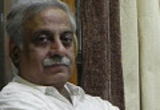 On 9 October 2013, an Indian newspaper reported that over 4000 babies died due to a lack of acute medical care because of an electricity failure in the region now known as Seemandhra. The electricity workers were on strike and this had plunged the region into a blackout that started on 8 October and ultimately lasted more than a hundred hours. Why did the strike occur and what is its history? Clearly the report suggests a crisis. What is the healthcare scenario in the region and its prospects?
On 9 October 2013, an Indian newspaper reported that over 4000 babies died due to a lack of acute medical care because of an electricity failure in the region now known as Seemandhra. The electricity workers were on strike and this had plunged the region into a blackout that started on 8 October and ultimately lasted more than a hundred hours. Why did the strike occur and what is its history? Clearly the report suggests a crisis. What is the healthcare scenario in the region and its prospects?
Telangana and Seemandhra are two parts of the state of Andhra Pradesh (AP). There is a historic disagreement between them about being together—Telangana has long wanted out, while Seemandhra has wanted a united state or, rather, access to land, opportunity, and jobs in metropolitan Hyderabad, which is the developed capital of AP. After P Chidambaram, the central finance minister, announced on 9 December 2009 that Telangana would be made a separate state, there was a sustained political movement in that region until the ruling Congress party confirmed in August 2013 that AP would be divided into two states: Telangana and Seemandhra. Hyderabad would remain with Telangana. The stunned Seemandhra region reacted to the announcement with a protracted general strike, demanding Samaikyandhra (an “equal and united Andhra”) immediately after. The news about the death of the babies was in this phase.
Memory has it that hospitals functioned well in Hyderabad when it was the capital of Nizam’s Dominion (the largest princely state in British India) before it became part of the Indian union in 1948. This was not the case in the Telangana and Seemandhra hinterlands, which like most regions of the empire, had abysmal healthcare. After independence, the nation state’s health planning, saddled with budgetary constraints from the beginning, prioritised disease control and eradication. By the late 1960s international pressure put family planning on the main agenda.
Minimal curative care was delegated to private practices and nursing homes that emerged in towns through the 1970s. State equipment then consisted of a pathology lab, a microscope, and an X-ray machine. Up to this point government hospitals were reasonably funded, operated, and patronised. In the 1980s privately run diagnostic centres and corporate hospitals mushroomed, importing medical equipment, and promising advanced care. Costs skyrocketed, and the governmental health system worsened as doctors were lured to private hospitals. Arguably, the nucleus of the corporate hospital boom in India was Andhra Pradesh, though other states followed suit. The biggest corporate hospitals came up in Hyderabad, with a population of over six million at the time.
By 1990, investment in corporate hospitals in AP came from the newly rich dominant castes of the coastal region (part of Seemandhra), members of which went abroad for medical education and work experience. A combination of wealth, exposure to new medical technologies, and an enthusiasm for healthcare as an enterprise drove growth. At about the same time, there was international pressure to privatise medical care with the World Bank advocating paid clinical services as discrete from governmental public health programmes.
The mood of ascendant agricultural castes of the wealthy coastal region (part of Seemandhra) and the neoliberal enthusiasm for market growth was personified in the Telugu Desam party chief minister, Chandra Babu Naidu. The Seemandhra upper castes have for decades dominated Hyderabad’s new industrial and commercial growth, cornering land, finance, and opportunity. In Telangana, resentment over barred access to jobs, opportunities, and land across class and caste boundaries, fueled the agitation to separate.
Hyderabad’s lopsided growth in corporate medicine has as its correlate crippled governmental healthcare across AP. Small specialty hospitals burgeoned in towns: more in Seemandhra and less in Telangana. In 2006, the congress chief minister, the (now deceased) YS Rajasehkar Reddy, from Kadapa (in Seemandhra), started the Aarogyasri government insurance programme of largely privatised tertiary healthcare for the extremely poor. This enormously popular health programme effectively funnels funds to corporate hospitals by offering specialty care for illnesses that advance largely untreated due to failure of a comprehensive healthcare network.
Most people in Seemandhra (except the poorest) access private medical care, even if unregulated and exorbitantly priced. Telangana is worse off. It doesn’t need expertise to see that smaller towns and cities desperately need better medical care. While the poor need a working government healthcare system, powerful private and government players oppose it.
Doctors who have read the news report above feel that it is not probable that so many babies died given that most people go to private hospitals in Seemandhra. These have diesel generators, and when the sets have to shut down, some alternate measures would be taken for the critically ill. Informed opinion has it that doctors joined the Seemandhra strike nominally, to avoid ostracism.
(Written in conversation with Drs Vijay Kumar of Ramachandra Reddy Hospital, Nellore and Gopal Kishan of Mediciti Hospital, Hyderabad. This post is also based on discussions over several years with Veena Shatrugna, A Suneetha, Rajan Shukla, and M A Moid. Errors and omissions are mine alone).
R Srivatsan works at Anveshi Research Centre for Women’s Studies in health and development initiatives.